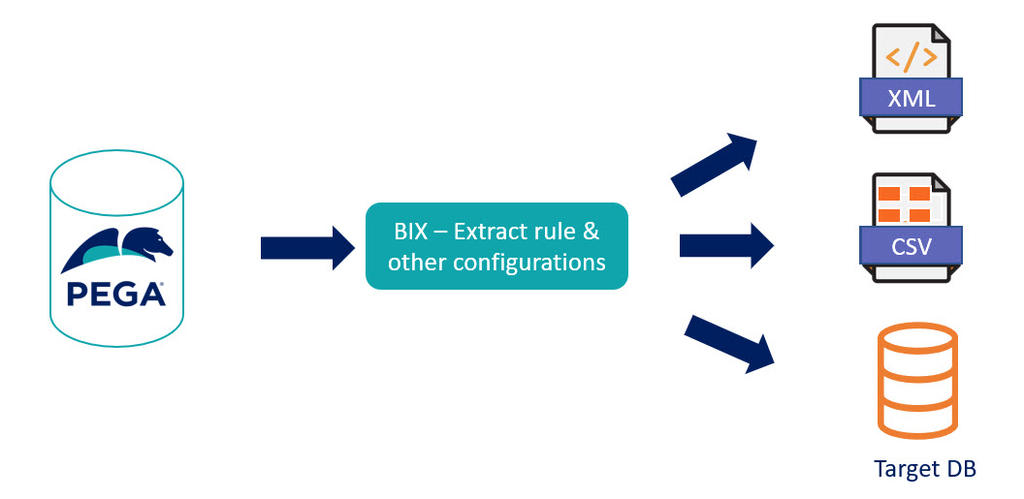
Reporting and data warehousing
Organizations often want to combine data from web applications, legacy applications, and other sources to make decisions in real time or near real time. Many organizations use business intelligence software to collect, format, and store data and provide software to analyze this data to make these decisions.
A data warehouse is a system for reporting and data analysis. The data warehouse is a central repository of integrated data from one or more separate sources of data. The extract, transform, and load (ETL) process prepares the data for use by the data warehouse. The following conceptual diagram illustrates a typical end-to-end process of extracting data from systems of record, storing the data in the warehouse, and then making that data available to reporting tools.
Determine whether you design your reports in the Pega Platform™ application or use an external reporting tool that impacts application performance. For example, if your reporting requirements state that you show how many assignments are in a workbasket at any given time, you can create a report on the assignment workbasket table. If you analyze multiple years of case information to perform some trending analysis, use reporting tools suited for that purpose instead. You can link those reports from the end user portal in the Pega Platform application.
Business Intelligence Exchange
You can use Business Intelligence Exchange (BIX) to extract data from your production application and format it to make it suitable for loading into a data warehouse. BIX is an optional add-on product that consists of a ruleset and a standalone Java program run from a command line. BIX data from the BIX process can output XML or CSV formats or output directly to a database. The following diagram illustrates the process of extracting the data from the Pega database and preparing the data for use by downstream reporting processes:
For more information about BIX, see Business Intelligence Exchange.
Check your knowledge with the following interaction:
This Topic is available in the following Module:
If you are having problems with your training, please review the Pega Academy Support FAQs.
Want to help us improve this content?

